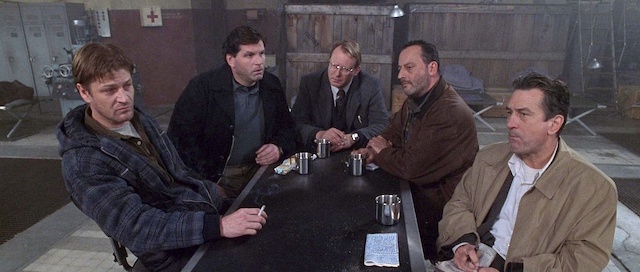Clues, Conflict, Tension, and Twists

Clues, conflict, tension, and twists are all mystery genre components. You need each in your novel. They serve different purposes but work together to create reader engagement.
A mystery is plot-driven because you create a puzzle. Your sleuth looks to identify the killer. But, for your reader to keep reading, they need to care about your protagonist. Each of these components works to increase the reader’s relationship to your hero or heroine.
Clues
Clues are details and bits of information that point your sleuth and the reader toward the villain. Your detective may notice a clue, or overlook a clue. They can misinterpret what they see or hear. Physical evidence can be a clue, but not all clues are evidence.
- Physical items the victim left behind – letters, notes, notebooks, a keepsake, tickets, ticket stubs, emails, text messages, etc.
- Dialogue with suspects – voicemail recordings, conversations with the detective, overheard conversations, dialogue with the detective’s opponent or love interest. Even hearsay and gossip can hide grains of truth that are clues.
- Background – cultural paradigms in the victim’s world that make sense within that world. When a victim is part of a specialized world, your detective may need to know about the world in order for pieces to make sense. Think Dick Francis and horse racing. But it could be anything from the gambling underworld to flower shows, or dog breeding, or sculling, or deep water diving, or spiritual cults, or… you get the idea.
Clues are anything the detective learns that point him toward resolving the mystery.
Clues work in your story to create the puzzle. Each clue gives the sleuth and your reader a new way to consider the murder and the possible suspects. Clues work hard in the first half of your story to point in multiple directions.
Conflict
While clues propel the story forward, conflict puts obstacles in the way. Conflict raises questions about whether the sleuth will solve the puzzle. Sources of conflict can be people or inanimate objects.
- Suspects – suspects may refuse to answer questions or supply misinformation that leads your sleuth down the wrong path.
- Opposition – characters, not necessarily suspects or the villain, may want to keep your sleuth from success. They may be jealous or aggressive or even not know they are inadvertently disrupting the search for the truth.
- Geography and weather – Physical challenges contribute to your sleuth’s success. From trying to find a clue in a thunderstorm or under a blanket of snow to succumbing to heat or cold. Dark city streets or pounding surf from an incoming tide.
- The villain – the killer works behind the scenes to keep your sleuth from discovering the truth.
Conflict works to raise questions about the sleuth’s success.
Tension
Your writing goal is to get readers to care about the story’s outcome. When a reader feels “I want to see how this turns out,” they experience dramatic tension. As your story progresses you build tension to keep readers guessing and turning pages.
Ideally, each scene has tension. At some point in the scene, the reader wonders about the outcome. Tension isn’t always built on physical conflict, it also comes from ideas. Will your detective make the right decision? Will she figure out what to do next?
Internal tension – Internal tension varies by character, but to make it work in a story, it is usually based on internal conflict elements.
- The protagonist’s internal issue – the dilemma or flawed state that holds them back
- Their inner goal – the ideal state where the story pushes them
- The opposition – forces preventing the ideal state, often the protagonist’s own fear or misunderstanding
- The stakes – the positive or negative outcome of resolving or not resolving their internal predicament
External tension – external tension is what readers call “the story.” Build external tension combining story elements.
- The protagonist – the character whose story it is
- The problem – the problem producing predicament forced on the protagonist
- The goal – what the protagonist thinks is the solution to the problem
- The opposition – forces preventing the solution
- Their motivation – what will be gained or lost from winning or not achieving the solution
When readers abandon a book, it’s often because the outcome is predictable or the protagonist hasn’t earned their involvement. If the reader doesn’t care about the protagonist and the struggles, they’ll have a hard time caring about the outcome.
Careful use of the external conflict elements poses dramatic questions for the reader, eliciting emotional anticipation regarding the story’s ending. The anticipation may be emotional or intellectual for the reader, but the story must elicit questions about the outcome.
Emotional dramatic questions stimulate emotional reactions. Reader empathy, sympathy, or identification with the protagonist is essential for building emotional tension. And, something meaningful must be at stake.
Tension works to create emotional engagement with your story.
Twists
Twists are surprises for your reader. Everything changes. In mysteries, twists often come when a new light shines on old information. The final reveal of the villain is the ultimate mystery twist. Knowing the type of twist you create allows you to give the right signals to your reader.
New Information
New information that turns the story is traditional fare, from Sherlock Holmes onward. You provide information, clues, and opinion that leads the reader to a logical deduction about what happened. But, as the story progresses, other bits of disparate, confusing, or seemingly irrelevant details are interspersed with the other information. When you present new information, the reader’s former logical deductions are dislodged. The Netflix series Criminal United Kingdom, France, and Germany is based on new information to turn the results.
Paradigm Shift
This twist everything seems to be happening according to one set of presented facts. Once contradictory evidence is revealed, it’s impossible for the reader to go back to viewing the story in the same way. Think of The Matrix where a computer programmer discovers he is in a simulation.
In mysteries, the prime example of a paradigm shift is an unreliable narrator. The reader is led to believe a character is one type of person, and then discovers they are not who they said they were. This usually happens because the narrator leaves out important facts like Gillian Glynn’s Gone Girl where the narrator manipulates the reader the way she does the people around her.
Twists work to reinvigorate your story, keeping the reader wondering until the final twist.
Build Anticipation Scene-By-Scene
Blend each element into each scene in your mystery. Is there a clue to propel your sleuth forward? Is someone or something keeping them from their goal? Does it raise a possibility that drives your reader to turn the page to discover what happens? Does the story direction change?
Every scene does not need all four elements, but you should aim for three. Check for these elements to drive your story forward.
Photo by Christopher Campbell on Unsplash





